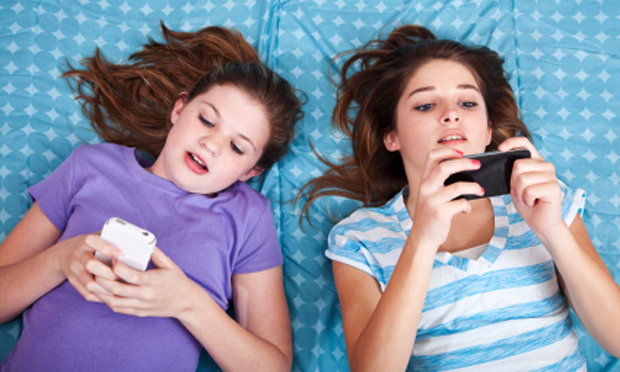A teenager wearing earbuds while texting friends is a common sight in the United States. A 2010 Kaiser Family Foundation study found that the amount of time that young people ages 8 to 18 reported consuming media — more than 10 hours a day — has soared while the size of the devices and screens they use has shrunk. Much of this time is spent multitasking, such as texting while watching TV.
To what extent does being “plugged in” negatively affect a young person’s social, emotional and intellectual development? Some developmental psychologists have linked multitasking behaviors to the degradation of social and cognitive skills; others have lauded digital media as a relatively safe space where online behaviors mirror an individual’s offline development.
A 2012 study from Stanford University published in Development Psychology, ”Media Use, Face-to-Face Communication, Media Multitasking and Social Well-being Among 8-to-12-Year-Old Girls,” examined how digital media consumption and multitasking may impact social and cognitive development of ’tween girls. Media use included “video, video games, music listening … e-mailing/posting on social media sites, texting/instant messaging, and talking on phones/video chatting.” Researchers used data collected from nearly 3,5000 respondents to an online survey sponsored by Discovery Girls magazine in the summer of 2010.
Major findings include:
- Watching videos, communicating online and media multitasking “were consistently associated with a range of negative socioemotional outcomes…. Face-to-face communication and online communication are not interchangeable.”
- Despite increased media use by ’tween girls, “no more than 10.1% of respondents ranked online friends more positively than in-person friends for even one item. Even heavy media users tended to derive … positive feelings principally from in-person friends.”
- Most media use had a neutral or slightly negative correlation with social well-being. In particular, watching videos was strongly associated with more negative feelings. However, “face-to-face communication was positively associated with feelings of social success [and] was consistently associated with a range of positive socioemotional outcomes.”
- “Video use, talking on the phone, and online interactions were all strongly associated with having a greater number of friends perceived by parents as bad influences.”
- Feelings of being judged or criticized originated from both online and in-person sources: “Approximately half of all respondents attributed their negative feelings to online friends, whereas the other half attributed their negative feelings to in-person friends.”
- Participants reported approximately seven hours of media use and two hours of face-to-face interactions per day, and they multitasked with an average of 2.4 media items. These levels are significantly lower than those previously reported and are the result of the exclusion of boys and older youth.
- “Cell phone ownership and having a television or computer in one’s room had little direct association with children’s socioemotional well-being.”
The researchers noted that media multitasking was found to be associated with negative outcomes: “coupled with the association of media multitasking and problems with cognitive control of attention…. The current results suggest that the growth of media multitasking should be viewed with some concern.”
Tags: youth, cognition, Facebook, Twitter, mobile tech


Expert Commentary